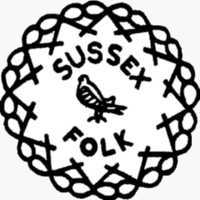

Scottish Dance Resources
Club Locator
By Area/NameBy Meeting Day
American
Childrens
English
Events
Festivals
International
Morris & Clog
Music & Song
Musicians
Scottish
Teachers
Traditions
Scottish Country Dancing and Scottish Highland Dancing are two distinct types of dance - the former being social and carried out for recreational
purposes whilst the latter is a solo, performance and competition style. With the exception of some Highland dance classes (including some for children)
run by the Brighton Branch of the RSCDS, all the clubs are of the recreational Country Dance variety.
Also included are the Caledonian Societies whose main aims are social and cultural but they can provide the
occassional opportunity for Scottish Country Dancing as part of one of their events.
Scottish Country Dancing (SCD) involves groups of mixed couples tracing progressive patterns following a predefined
choreography. Couples are grouped into sets of 3 to 5 couples either in two lines or in a square. The dance sequence results
in a new order of couples and the sequence is repeated enough times for each person to dance each position until they
end up in the same position they had when they started. Normally each dance is run through or taught beforehand and there is
no caller. It is a living tradition in that while there were around one thousand dances collected at the 1920s, since then
around 10,000 new dances have been created.
Scottish country dances are divided into reels, jigs, and strathspeys. Reels and jigs are quick-time dances with fast tempos,
quick movements and a lively feel. The strathspey is slower and stately. Scottish country dancing calls for more footwork
than English, having a greater variety of steps. These include travelling steps (such as the skip-change and the Strathspey
travelling step) and setting steps (such as the pas de basque and Strathspey setting step). Highland dance setting steps,
such as the rocking step, high cuts, or Highland schottische may also occur. There is also the slip step for quick sideways movement in circles.
As with all set dance styles, the most important aspect is being in the right place at the right time and getting there without
impeding others and staying in time with the music. It is also very much a social dance, so interacting with the people one meets is encouraged
and this can help beginners to maintain an even speed in the right direction. It is very much a team effort with the ideal
being formations executing sequences perfectly in unison to achieve the perfect pattern. Sets of matched couples can vary in
how far they travel to execute the dance but achieving the ideal is still the over-riding aim. Thus the same dances can be
attempted by different ages provided all the couples in each group dances at the same level of energy.
Scottish highland dance is nowadays a style of solo dancing regarded as a sport rather than a social pastime, and
is usually danced in competition and displays. Scottish country dances can include highland elements and highland-style performance
dances can use formations seen in country dances, but other than that the styles do not really have a lot in common. It evolved
during the 19th and 20th centuries through public events such as Highland games. (Irish dancing is similarly divided between
the social dances (céilí and set dancing) and the competative and performance stepdancing.
Copyright© SusFA/John Douglas